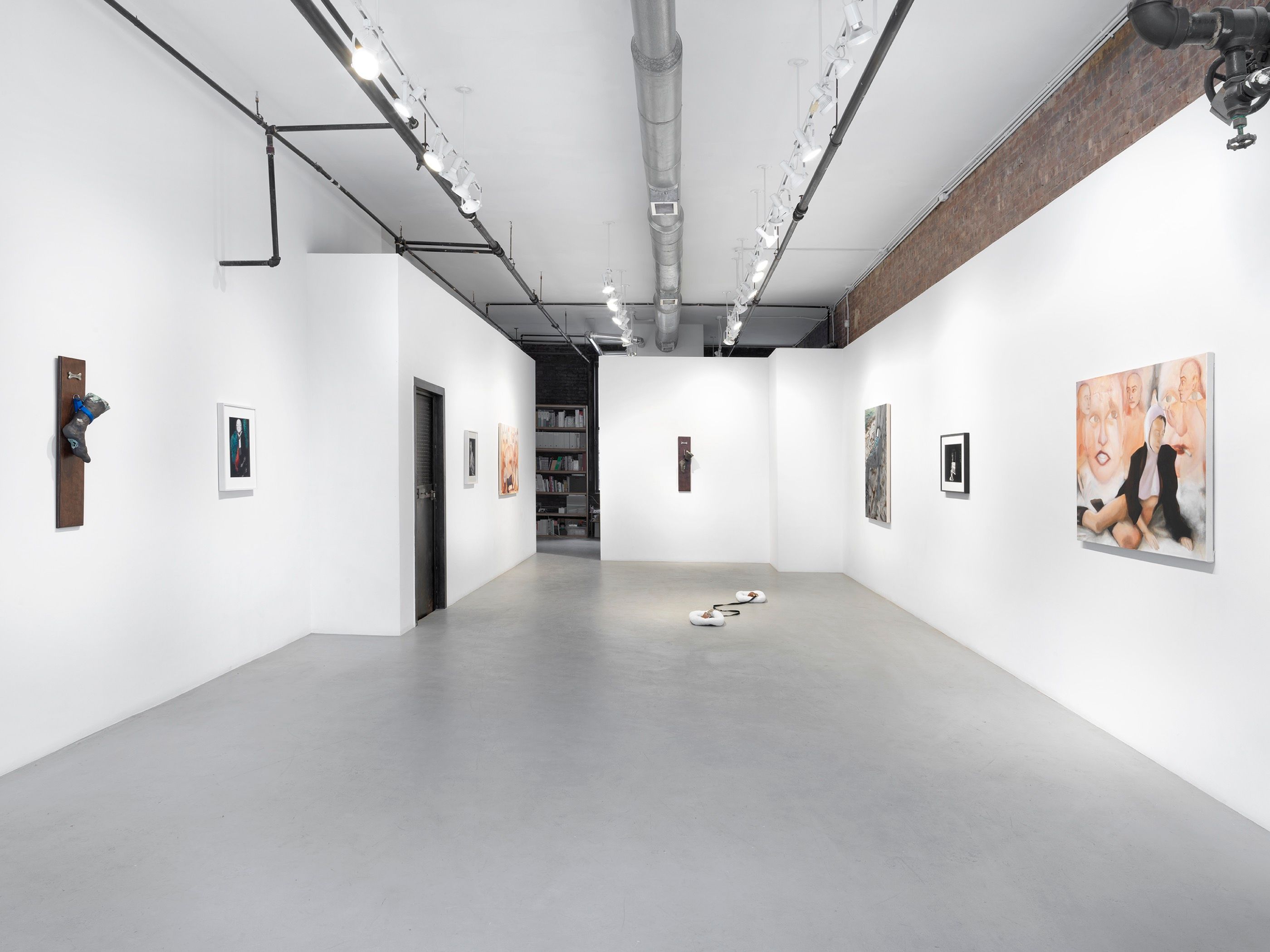Common Nocturnes presents a collection of works by four artists exploring the ways in which our commonly held belief systems are in desperate need of personal, cultural, and structural revaluation. Utilizing contemporary queer and feminine lenses, the artists in Common Nocturnes chip away at outdated systems to reveal underlying and generative personal truths. The result is a fertile microcosm of perspectival shifts and radical transgressions. Exploring themes of sexuality, unconventional relationships, and humor in the privacy of their studios, these artists’ works possess the alchemical ability to bring a collective darkness into the daylight.
Ten Izu’s sculptures draw upon personal experiences with codependencies and hierarchies of power: from deconstructing their rebellions against a Catholic upbringing, to the realization that the artist’s cat depends on them for all aspects of survival. Many questions permeate Ten Izu’s practice: What motivates a pet goldfish to leap from its fishbowl to a certain death? Or, how do imbalanced systems of wealth and power produce constant economic precarity for some while not for others? Izu’s childhood introduction to Medieval representations of Hell and human mortality inspire their hybridized visual language that blends tropes of religious iconography with playful commentary on interpersonal relationships.
Sean Mullins‘ paintings echo well-known Medieval figuration and Northern Rennaissance portraiture. The subjects of Mullins tender renderings are friends, lovers, and those who evade simple relationship categorization. One figure sleeps under a tree with their nose in a book, completely obscuring their identity. The gestural quality of Mullins’ brushstrokes suggest the sleeper’s chest rising and falling before our eyes. With a seeming lack of concern for the audience’s gaze, Mullins’ figures present themselves as casually uninterested in outside attention.
Penny Slinger’s suggestive photo collages from the 1970’s assemble a specific sexualized symbology: insects, feathers, and fruits entangle themselves with hermaphroditic bodies lounging within classical architectures. The common earthworm is an example of hermaphroditism from the natural world. In one particularly salacious photo collage a girthy worm protrudes from a woman’s ecstatic open mouth. In another image, a pupal cicada joins a writhing woman in bed as a welcome participant. Slinger’s imagery induces a psychosomatic reimagining of our natural sexual potential.
Joanna Woś’ fleshy and seductive paintings render multiple viewpoints simultaneously, blurring planes of visual perception such that a sense of queer time is established as an appropriate conduit for representing a nuanced sexuality. Various articles of clothing confuse the context of the setting. These scenes exist outside of private or public bounds. Dryly humorous, Woś constructs a world of uncanny scenarios of sexual exploration and exploitation.





















































































































